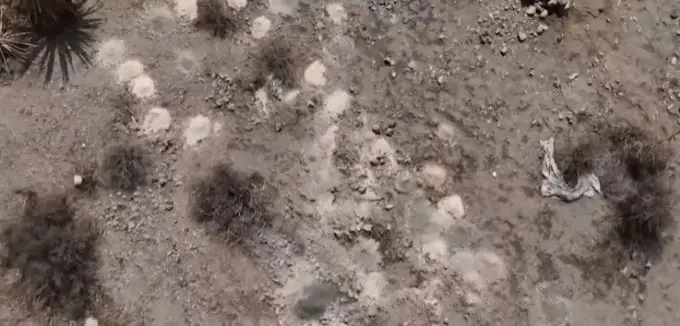Authorities in Nevada are investigating a macabre discovery in the Mojave Desert after more than 300 piles of cremated human remains were recovered from federal land south of Las Vegas, with officials saying the case likely involves illegal dumping by a commercial funeral business but offering no firm identification of those responsible. The Bureau of Land Management confirmed that the first discovery was made near the rural community of Searchlight on 28 July, about 55 miles southeast of Las Vegas, after a passerby alerted local media and law enforcement to dozens of ash mounds clustered off a dirt road. Federal agents later verified the material as human “cremains,” and the scope widened in late October when recovery teams said they had collected roughly 315 distinct piles, some found in a second nearby area, underscoring the scale of what investigators have called an unprecedented mishandling of the dead on public land.
The location—BLM-administered desert terrain alongside U.S. 95—became the focus of a joint inquiry involving the federal land agency and the Las Vegas Metropolitan Police Department after photographs obtained by local journalists showed small grey mounds scattered among low desert vegetation, along with items that appeared to be zip ties and fragments consistent with a broken urn. Through August, officials were cautious on numbers, describing “up to 70” piles while analysis proceeded. By the end of October, however, a coordinated recovery led by Palm Mortuaries and Cemeteries counted approximately 315 piles, with the company stating the remains would be interred together in a downtown Las Vegas crypt so families would have a place to visit. The BLM has not named a suspect and has not released further forensic detail beyond the confirmation that the material is human; the agency has said the investigation is active.
In interviews reported by Las Vegas outlets and national follow-ups, Palm’s president, Celena DiLullo, said the recovery team’s priority was to treat the deceased with dignity after what appeared to be a large-scale dumping that left no identifiable tags or paperwork in the ash. “I think it’s important to us to make sure that these people are not forgotten and not left. It’s important to our community and our profession that we demonstrate how much we do care about these people,” she said, adding that the remains would be placed in a crypt to allow loved ones to mourn even if identification proves impossible. “I don’t know if it was the wishes of these people to be out,” she said of the desert setting, noting the lack of traceable information in the recovered piles.
Officials have repeatedly drawn a distinction between Nevada’s permissive rules for individuals who scatter ashes and the federal land manager’s restrictions on commercial activity. State law does not bar a person from scattering cremated remains on public lands or waters. BLM guidance, however, allows scattering by individuals while barring funeral homes from making “commercial distribution” of cremated remains on federal land, a policy that investigators and outside experts say would be implicated if a business offloaded dozens or hundreds of sets of ashes as part of its operations. That premise—permitted personal scattering versus prohibited commercial disposal—has shaped the inquiry since August and is central to the theory now being tested by federal agents and police.
